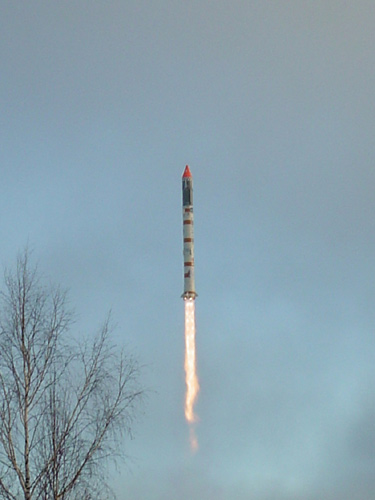Power Glitch Afflicts Europe's First Student-Built Satellite Mission

After beinglaunchedinto orbit last Thursday, a tiny European spacecraft built by students fellsilent Friday morning and officials aren't sure if the mission can be recovered.
"Thorough analysisover the weekend indicates that a failure in the electrical power systemonboard the spacecraft is preventing the batteries from charging, resulting ina shutdown of the satellite," the European Space Agency said in a press statementthis morning. "There is a small but significant possibility of recovery,the likelihood of which is being ascertained by ongoing testing."
The Student SpaceExploration and Technology Initiative (SSETI), began developing the SSETIExpress microsatellite two years ago to serve as a motivational aid andlearning tool before more complex missions are undertaken.
"Naturally, the SSETIteams are disappointed that we lost contact, but the mission has still been asuccess from both an educational and a technical standpoint", says ProjectManager Neil Melville. "The main goal of the mission was to educatestudents by having them involved hands-on in all the different aspects of aspace mission, and now we really have experienced everything".
During its brief life inspace, SSETI Express had two-way communications with the Aalborg Universityground station and allowed radio amateurs all over the world to downloadtelemetry data as designed.
The 137-pound (62-kilogram)satellite was supposed to take pictures of Earth, serve the amateur radiocommunity with S-band and UHF radio systems and release three Cubesatpicosatellites.
The Cubesats UWE-1 and XI-Vwere successfully deployed, allowing their respective ground teams to acquirecommunications with the free-flying craft. However, the third Cubesat ismissing. Although some have suggested that it never separated from the SSETIExpress mothership, ESA says there is evidence to say all three passengers werereleased.
Get the Space.com Newsletter
Breaking space news, the latest updates on rocket launches, skywatching events and more!
The University ofWurzburg's Experimental satellite 1, or UWE-1 for short, was built by studentsin Germany to experiment with Internet-related communications for use withspace missions.
The XI-V Cubesat came fromthe University of Tokyo with the purpose of demonstrating newly-developed solarcells in space and snapping Earth images using a commercial off-the-shelfdigital camera.
The presumed-lost Ncube-2from students in Norway carried an automated identification system (AIS) usedto receive GPS signals that would be received and then transmitted to groundsites. A reindeer named Rudolf was to be equipped with a collar containing acomplete AIS transmitter and tracked as it walked around the HardangerviddaNational Park in Norway.
SSETI Express was puttogether in a remarkably short period of time. Fifteen teams totaling more than100 students from 9 countries participated in an initial planning meeting inDecember 2003 before splitting up to focus on the design and manufacture oftheir specific components and systems. Further meetings were largely held inonline chat rooms, while actual conferences were conducted twice a year.
The mission objectivesincluded helping prepare for SSETI's next project - the European Student EarthOrbiter planned for launch aboard an Ariane 5 rocket around 2008.
"Even if we don'trecover contact with SSETI Express, it was still a very worthwhile mission foreveryone. We will take many lessons learned on to our next educationalsatellite project, SSETI ESEO", says Roger Elaerts, ESA's Head ofEducation Department.
Join our Space Forums to keep talking space on the latest missions, night sky and more! And if you have a news tip, correction or comment, let us know at: community@space.com.
Justin Ray is the former editor of the space launch and news site Spaceflight Now, where he covered a wide range of missions by NASA, the U.S. military and space agencies around the world. Justin was space reporter for Florida Today and served as a public affairs intern with Space Launch Delta 45 at what is now the Cape Canaveral Space Force Station before joining the Spaceflight Now team. In 2017, Justin joined the United Launch Alliance team, a commercial launch service provider.









